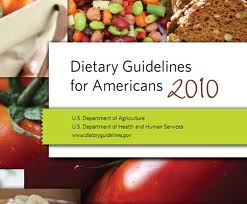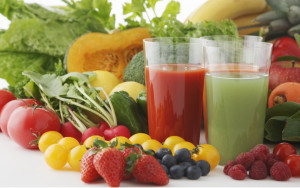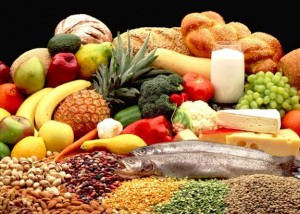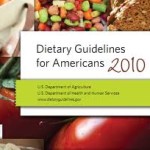The Dietary Guidelines for Americans, 2010, released on January 31, 2011, emphasize three major goals for Americans:
- Balance calories with physical activity to manage weight
- Consume more of certain foods and nutrients such as fruits, vegetables, whole grains, fat-free and low-fat dairy products, and seafood
- Consume fewer foods with sodium (salt), saturated fats, trans fats, cholesterol, added sugars, and refined grains
The Dietary Guidelines for Americans, 2010 include 23 key recommendations for the general population and 6 additional key recommendations for specific population groups, such as pregnant women. The recommendations are intended to help people choose an overall healthy diet.
- Balance calories with physical activity to manage weight:
People who are most successful at achieving and maintaining a healthy weight do so through continued attention to consuming only enough calories from foods and beverages to meet their needs and by being physically active. To curb the obesity epidemic and improve their health, many Americans must decrease the calories they consume and increase the calories they expend through physical activity.
- Consume more of certain foods and nutrients such as fruits, vegetables, whole grains, fat-free and low-fat dairy products, and seafood:
Individuals should meet the following recommendations as part of a healthy eating pattern while staying within their calorie needs:
• Increase vegetable and fruit intake.
• Eat a variety of vegetables, especially dark-green
and red and orange vegetables and beans and peas.
• Consume at least half of all grains as whole
grains. Increase whole-grain intake by replacing
refined grains with whole grains.
• Increase intake of fat-free or low-fat milk and
milk products, such as milk, yogurt, cheese, or
fortified soy beverages.6
• Choose a variety of protein foods, which include
seafood, lean meat and poultry, eggs, beans and
peas, soy products, and unsalted nuts and seeds.
• Increase the amount and variety of seafood
consumed by choosing seafood in place of some
meat and poultry.
• Replace protein foods that are higher in solid
fats with choices that are lower in solid fats and
calories and/or are sources of oils.
• Use oils to replace solid fats where possible.
• Choose foods that provide more potassium,
dietary fiber, calcium, and vitamin D, which are
nutrients of concern in American diets. These
foods include vegetables, fruits, whole grains,
and milk and milk products
- Consume fewer foods with sodium (salt), saturated fats, trans fats, cholesterol, added sugars, and refined grains:
Reduce daily sodium intake to less than 2,300 milligrams (mg) and further
reduce intake to 1,500 mg among persons who are 51 and older and those of
any age who are African American or have hypertension, diabetes, or chronic
kidney disease. The 1,500 mg recommendation applies to about half of the
U.S. population, including children, and the majority of adults.
• Consume less than 10 percent of calories from saturated fatty acids by
replacing them with monounsaturated and polyunsaturated fatty acids.
• Consume less than 300 mg per day of dietary cholesterol.
• Keep trans fatty acid consumption as low as possible by limiting foods that
contain synthetic sources of trans fats, such as partially hydrogenated oils, and
by limiting other solid fats.
• Reduce the intake of calories from solid fats and added sugars.
• Limit the consumption of foods that contain refined grains, especially
refined grain foods that contain solid fats, added sugars, and sodium.
• If alcohol is consumed, it should be consumed in moderation—up to one drink
per day for women and two drinks per day for men—and only by adults of legal
drinking age
Acknowledgments :
LivingNaturallyHealthy.com acknowledges the work of the U.S. Department of Agriculture and the U.S. Department of Health and Human Services acknowledge the work of the 2010 Dietary Guidelines Advisory Committee whose recommendations formed the basis for this edition of the Dietary Guidelines for Americans.
 November 17th, 2013
November 17th, 2013 







